Why the SARS-CoV-2 coronavirus is unlikely to lose its virulence
Since the start of the Covid-19 pandemic, there has been a steady stream of opinions on the evolution of SARS-CoV-2 virulence. For many, it is bound to diminish, since viruses, bacteria and other parasites have "always" lost their virulence as they adapted to their hosts.
Samuel Alizon, Institute of Research for Development (IRD) and Mircea T. Sofonea, University of Montpellier
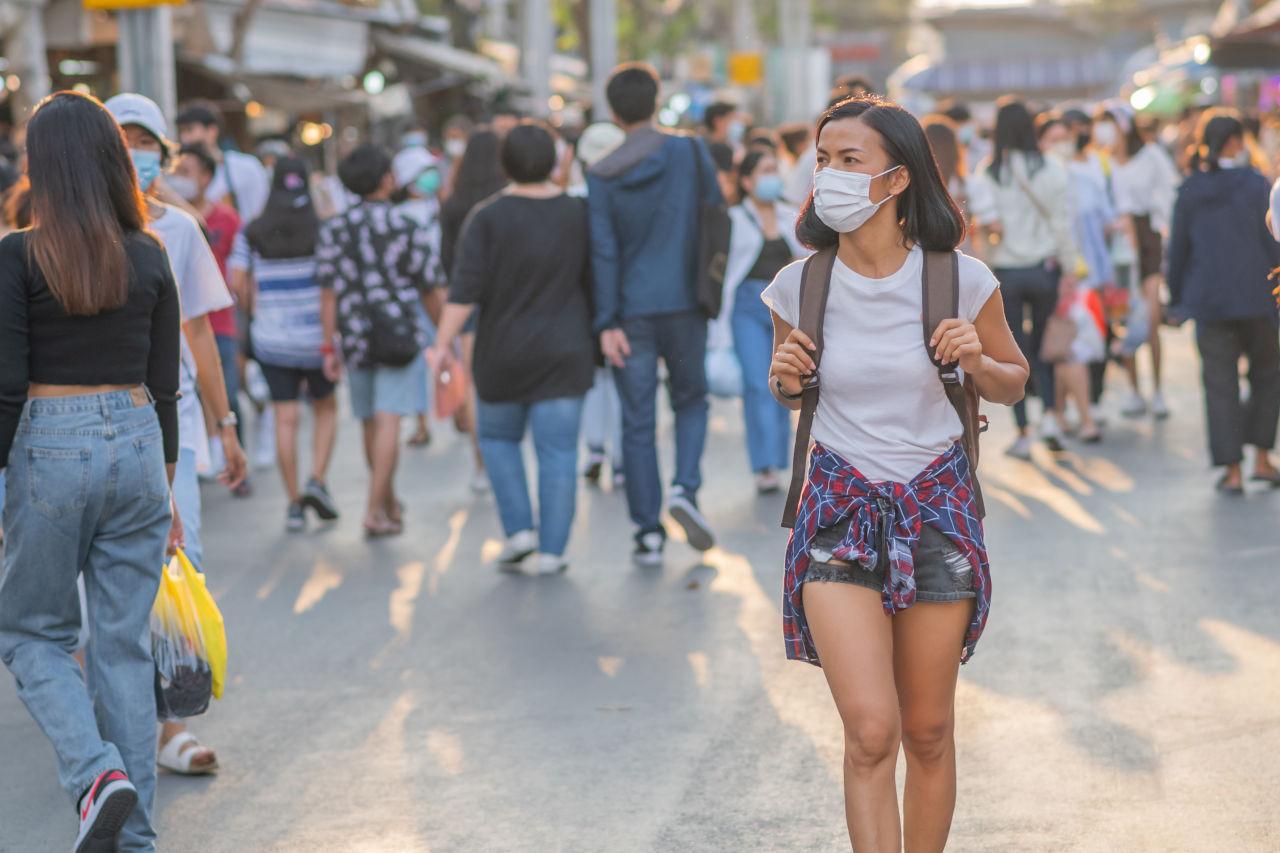
Unfortunately, this "intuition" doesn't stand up to analysis, as it requires us to see the human immunodeficiency virus (HIV), the tuberculosis bacillus, the malaria hematozoa or even influenza as exceptions. In fact, no matter how hard we look, it's hard to find "parasites" (to use an evolutionary biology term) that conform to this axiom, dubbed the "law of diminishing virulence" at the beginning of the 20th century.
So why does this view persist? What do recent discoveries in evolutionary biology tell us about virulence? And what can we expect in the case of SARS-CoV-2?
Don't confuse lethality with virulence
The logic behind the theory of the systematic evolution of parasites towards a state devoid of virulence(avirulent) is childishly simple: for the parasite, to kill its host is to kill the goose that lays the golden eggs. In other words, strains (or "variants", to use a more fashionable term) that kill their host quickly should be less successful than others, and therefore disappear.
One explanation for why this century-old theory is still so prevalent is the confusion between the notions of lethality and virulence.
Lethality is the proportion of infected individuals who die as a result of infection with a given parasite, in a given place, at a given time. Many factors contribute to reducing apparent lethality: treatment, vaccination, quality of clinical management, etc. Virulence, on the other hand, corresponds to the parasite's propensity to harm its host. It is quantified in the absence of specific treatment.
In other words, the same viral variant will have a different lethality from one country to another, depending, for example, on the quality of the hospital system. On the other hand, its virulence will be unchanged.
In the case of SARS-CoV-2, lethality has fallen since the start of the epidemic in many countries, largely thanks to vaccination. On the other hand, virulence has increased. Infections by the Alpha variant are more often fatal than those involving the ancestral lineages that were circulating at the start of 2020. As for the Delta variant, initial results suggest that it is more virulent than the Alpha variant, causing more hospitalizations in unvaccinated people. Preliminary results point in the same direction for the Beta variant.
Admittedly, this is counter-intuitive. But it also illustrates that evolutionary biology is a discipline in its own right, and that it's risky to proclaim oneself an expert in it. Many consider it to be more of a "hobby", to be pursued after acquiring sufficient experience in more proximate subjects, such as the mechanisms of development or the physiology of organisms. This is probably another reason why preconceived ideas about the evolution of virulence persist.
Does evolutionary biology really have more to offer than the intuitions of "wise old men"? Obviously, this field of research suffers from the fact that an epidemic cannot be reproduced identically. However, the analysis of epidemics prior to the one we are currently experiencing (notably HIV) and so-called "experimental" evolutionary studies, carried out on other parasites, are rich in lessons.
Two types of virulence
To begin with, we need to distinguish between two categories of damage inflicted by a parasite on its host, depending on whether or not it influences the spread of the parasite: non-adaptive virulence and adaptive virulence.
Non-adaptive virulence benefits neither party. In the case of SARS-CoV-2, this includes particularly severe manifestations of infection, such as cytokine storms. The second category of virulence is termed "adaptive", as it is associated with improved propagation of the parasite, either directly or indirectly.
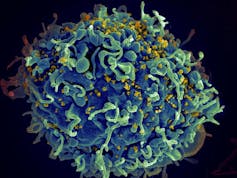
Seth Pincus, Elizabeth Fischer and Austin Athman, National Institute of Allergy and Infectious Diseases / NIH
In the case of HIV, for example, it has been shown that the more virulent variants - those that produce the most viral particles, exploiting their host's cells more efficiently or evading the immune response more effectively - are also more contagious, since the probability of transmission is linked to the amount of virus in the blood.
Distinguishing between non-adaptive and adaptive components of virulence allows us to better reason about the evolution of this trait. Non-adaptive virulence is generally expected to decrease, since it is only associated with costs. However, it's not that simple, as the parasite's life cycle must be taken into account.
In the case of SARS-CoV-2, severe symptoms generally appear after 2 weeks of infection, yet over 95% of transmissions occur before the 11th day. In other words, from the point of view of this coronavirus, late pathological manifestations (particularly inflammatory) of virulence do not represent a loss of transmission opportunities. Consequently, it is unfortunately unlikely that natural selection will favor variants that cause such immunopathological manifestations less frequently.
When it comes to the adaptive component of virulence, predictions are even less straightforward. It all depends on the relationship between the costs (virulence) and the benefits for virus propagation (transmission rate, duration of infection). Again, in the case of HIV, it has been shown that an intermediate level of virulence maximizes the selective value of the virus, i.e. the number of infections generated by a person carrying the virus.
One factor that could lead us to believe that there is such a correlation between virulence and transmission in the case of SARS-CoV-2 is that the more transmissible variants are also more virulent.
Our team has shown, for example, that in France the Alpha variant has a clear transmission advantage over ancestral lines. Our British colleagues concluded that its virulence had increased by 50%. Similarly, in June 2021, we showed that the Delta variant was more contagious than the Alpha variant. According to this logic, a more transmissible variant could therefore be even more virulent.
What can we expect?
The fact that more contagious variants are more virulent suggests that the adaptive component of virulence is not zero.
The difficulty in anticipating viral evolution is that we need to know to what extent the virus, i.e. the Delta variant, is now adapted to us. Does this coronavirus still have room to exploit its human host more effectively (in other words, for this level of contagiousness, could it be less virulent)? Or, on the contrary, would any drop in virulence also mean a drop in contagiousness?
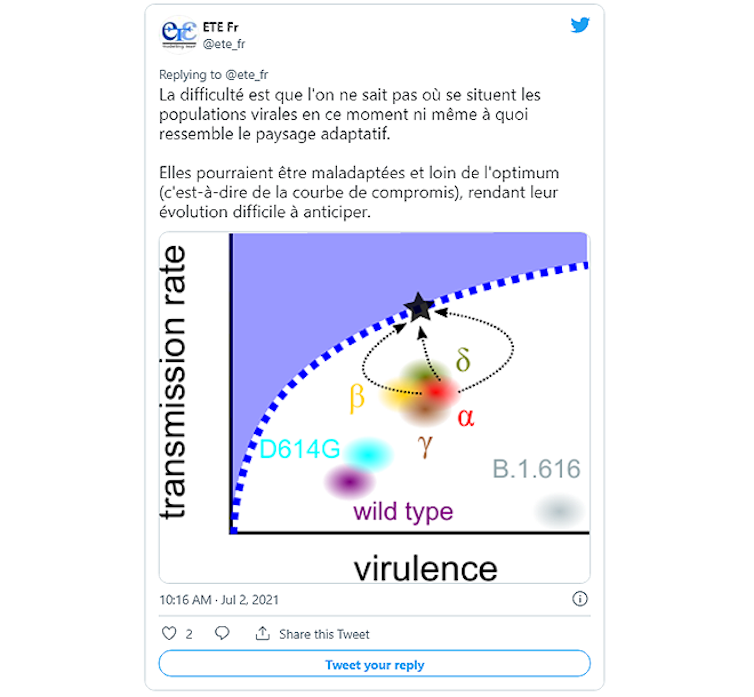
@ete_fr - July 2, 2021
In the first case, while the virus still has some leeway to better adapt to its host, it is virtually impossible to anticipate the next stage in its evolution. However, mutagenesis experiments could help to identify the most stable viral forms. It should be pointed out that these mutant generations in the laboratory are carried out in a secure manner (for example, only a given viral protein is worked on).
Such "deep mutation screening" work has been carried out on a part of the gene used to make the virus' S protein (the part containing information about the receptor binding domain(RBD), which serves as the "key" to entry into our cells. They consist in generating all possible mutations in the RBD, then studying their effect on the production of the resulting S proteins, and their ability to bind to the ACE2 receptor on the cell surface (the receptor which serves as the virus' entry point). This work has enabled us to identify sites particularly at risk in terms of variant evolution.
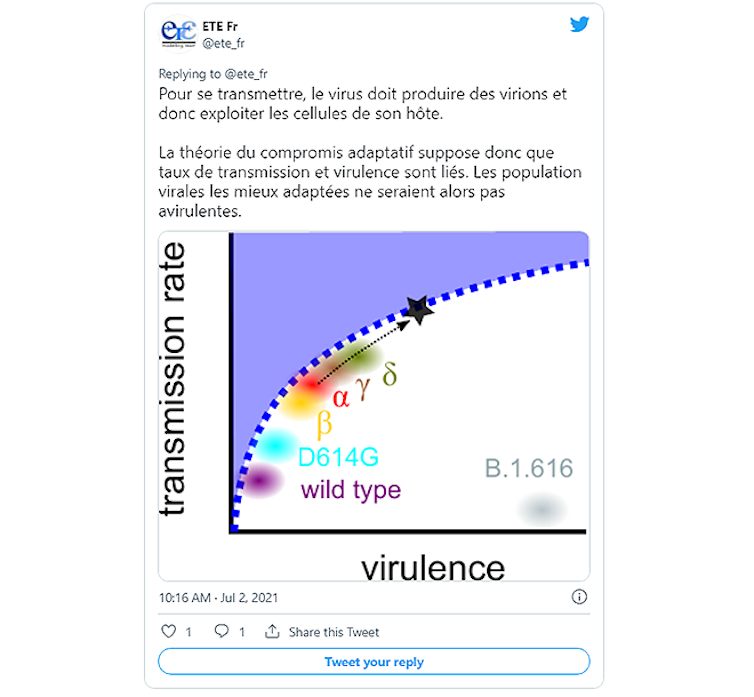
@ete_fr - July 2, 2021
In the second case, we might expect virulence to stabilize around a value that maximizes the number of secondary infections, i.e. an optimization between transmission rate and virulence. Predicting this would require precise knowledge of the constraints between these two features of infection. But then again, that's not the end of the story.
The effects of immunization
Population immunization (natural or through vaccination) upsets the adaptive landscape of viruses: the most adapted variant in an unprotected population may find itself in the minority in an immunized population. This was tragically the case in Brazil, where, having built up a group immunity at the cost of a major health catastrophe, a second wave of the Gamma variant nonetheless hit the country - thought to have rapidly invaded because it was partly able to escape the immunity conferred by ancestral strains.
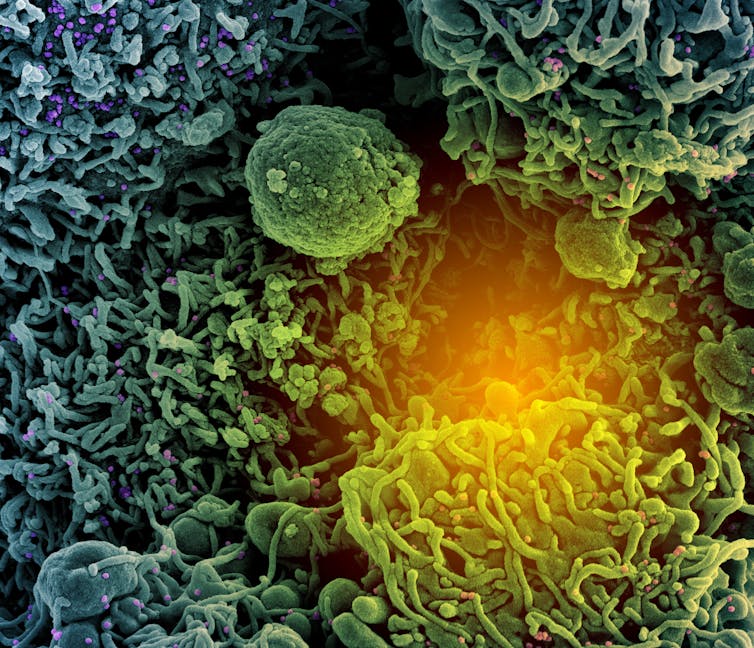
NIAID / NIH
In the short term, vaccination is essential: like natural immunity, it reduces the lethality of infection, accelerating the transition to a dynamic similar to that of seasonal respiratory viruses. Indeed, a year ago, no one would have dared to hope for such vaccine efficacy against the onset of severe forms (even for the Delta variant, protection is estimated at around 85%). For those not fortunate enough to have access to the vaccine, the lethality of infections is already higher than in 2020, and could increase still further with the evolution of future variants.
Reconciling Pasteur and Darwin
Over and above the sense of urgency resulting from the health situation, it is important to consider the pandemic in the medium and long term. Forecasting is a tricky business, since the relationship between the virus and our immune system is co-evolutionary: viruses mutate and our immune responses change. To try and anticipate the future, we need to take into account the efficacy and duration of natural and vaccine immunity, which reduces the speed of evolution of viral populations: fewer infections means fewer mutations...
The study of these dynamic relationships and their implications is the subject of evolutionary biology. Unfortunately, in addition to the chronic lack of funding for scientific research in France, this discipline suffers from a lack of recognition, and the knowledge available is too rarely put to good use. One example among many: despite the effort made to include various facets of SARS-CoV-2 research on the Scientific Advisory Board, it does not include any⋅e evolutionary biologists.
To entrust the anticipation of evolutionary trends in pathogens to the intuitions of a "traditional wisdom", unaware of the most recent discoveries and tools of evolutionary biology, is to move forward with one's eyes closed. In terms of infectious diseases, this can have particularly serious consequences, given the speed with which microbes evolve and spread. In the field of public health, we urgently need to reconcile Louis Pasteur and Charles Darwin.
Find out more:
- Alizon, S. & Sofonea, M. T. (2021) SARS-CoV-2 virulence evolution: Avirulence theory, immunity and trade-offs. Journal of Evolutionary Biology
- Alizon S. (2020) Pandemics, Ecology and Evolution, éditions Points![]()
Samuel Alizon, Director of Research at CNRS, Institute of Research for Development (IRD) and Mircea T. Sofonea, Senior Lecturer in Epidemiology and Evolution of Infectious Diseases, MIVEGEC Laboratory, University of Montpellier
This article is republished from The Conversation under a Creative Commons license. Read theoriginal article.